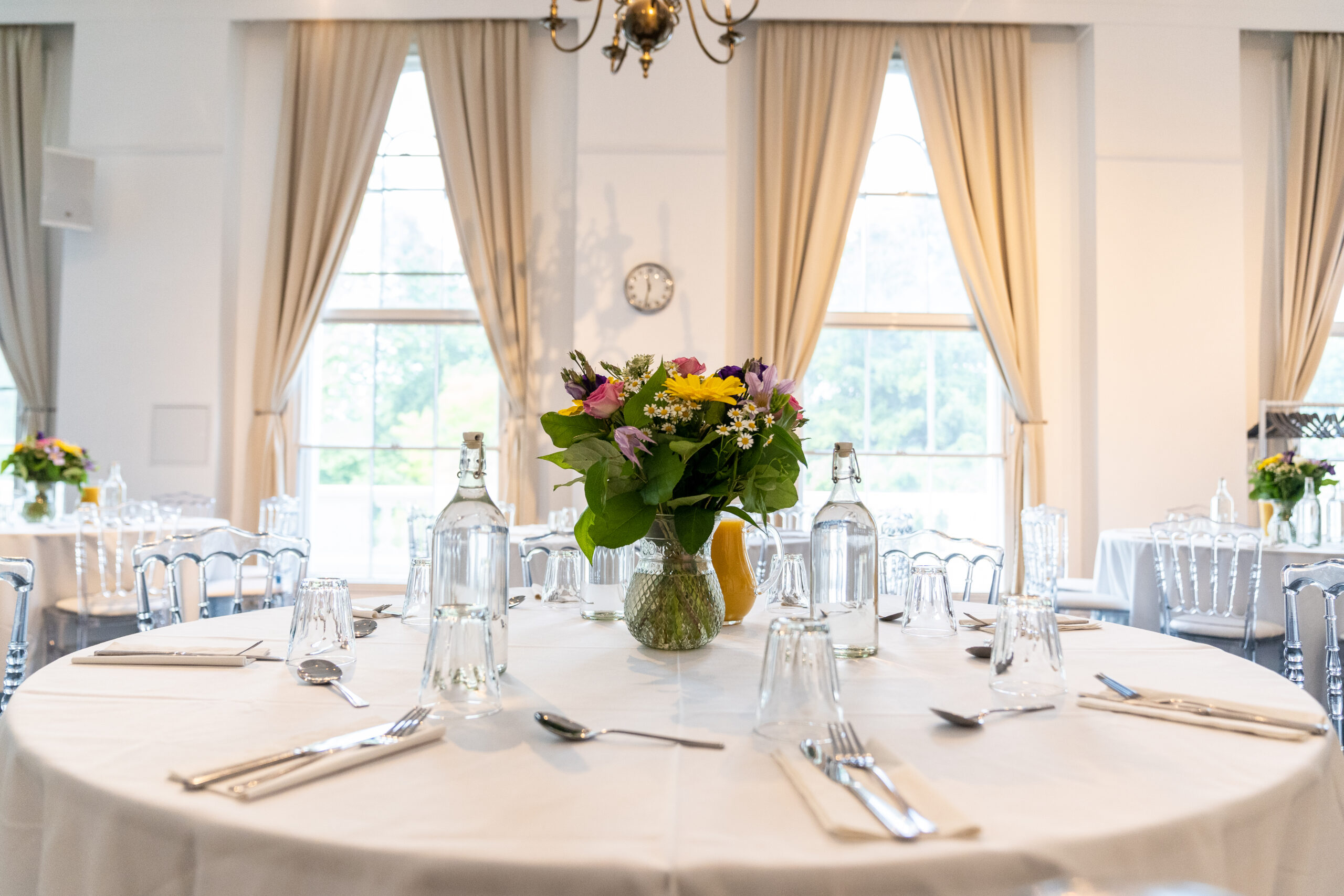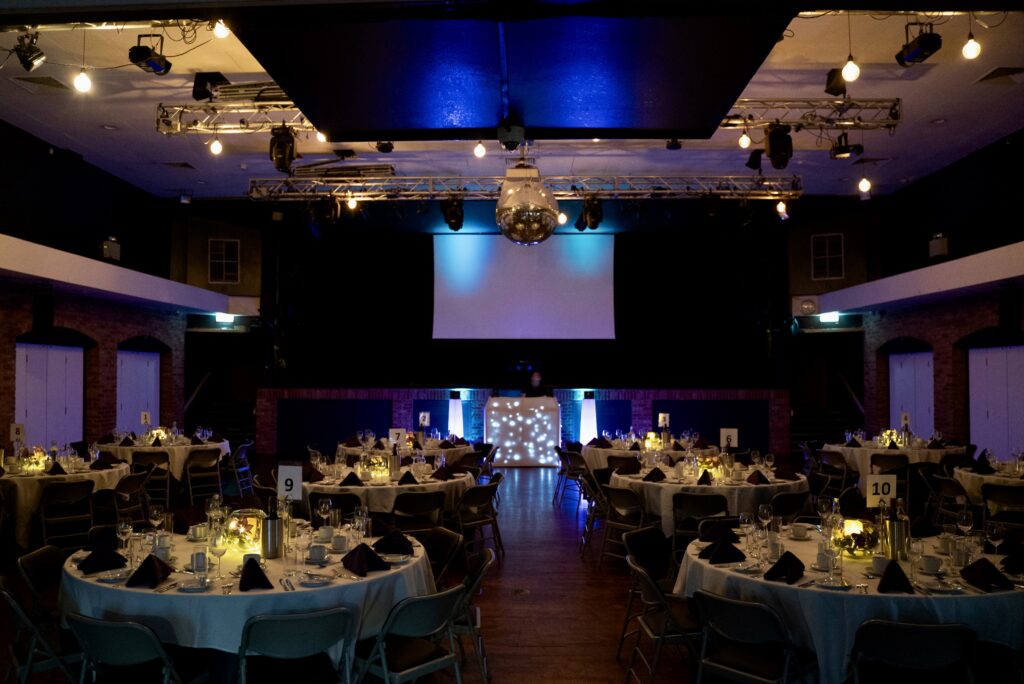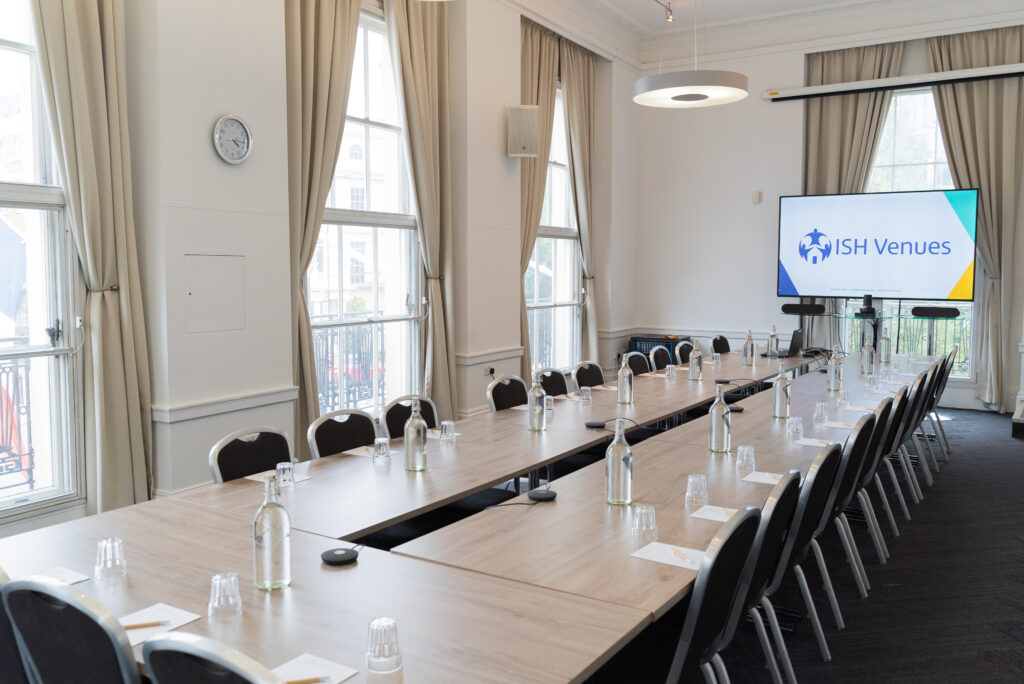
07 Aug A Guide to Creating the Perfect Venue Setup
Setting up a venue for an event, whether it’s a wedding, corporate function, or a casual gathering, requires careful planning and execution. A well-organised setup not only enhances the aesthetics of the venue but also ensures a smooth flow of activities. Here are some essential tips and strategies to help you set up your venue perfectly:
1. Understand the Event Requirements
Understanding the event requirements is the foundation of a successful venue setup. Begin by identifying the nature of the event, whether it is formal, informal, corporate, or something else entirely, as this will influence your choices for decor, seating arrangements, and overall ambiance. Next, determine the number of guests expected, as this will affect the scale and layout of your setup to ensure adequate space and comfort. Additionally, consider the planned activities—whether they include presentations, performances, or interactive sessions—as this will help you design the venue layout to support these activities effectively.
2. Create a Detailed Layout Plan
Draw a floor plan of the venue to visualise the setup. Include:
- Seating arrangements
- Stages or focal points
- Dining areas
- Entertainment or activity zones
Use software tools or apps to create digital floor plans for better precision.

Venue 1 at ISH Venues is set up in banquet style to encourage guest interaction and create a warm, communal atmosphere perfect for celebratory events.
3. Seating Arrangements
The seating arrangement depends on the type of event:
- Banquet Style: Ideal for weddings and dinners. Round tables promote conversation.
- Theatre Style: Suitable for presentations and performances. Rows of chairs facing the stage.
- Classroom Style: Perfect for workshops and seminars. Tables with chairs facing the speaker.
- U-Shape Style: Great for meetings and discussions. Tables arranged in a U-shape.
4. Lighting and Sound
Proper lighting and sound are essential elements that can significantly transform the ambiance of any venue. Ambient lighting, such as soft, diffused lights, can create a warm and inviting atmosphere, making guests feel comfortable and relaxed. Additionally, strategically placed spotlights can be used to highlight stages or important areas, drawing attention to key aspects of the event and enhancing the overall visual experience. It is also crucial to ensure that the sound system is appropriately sized and configured for the venue, as poor sound quality can detract from the event’s impact. Conducting a thorough sound check before the event helps to identify and resolve any issues, ensuring clear and consistent audio throughout the space.
5. Decor and Theming
Choose decor that complements the event theme. Elegant floral arrangements for weddings and formal events create a sophisticated and romantic atmosphere. For corporate events, branded elements such as banners and backdrops reinforce the company’s identity and message. Themed decorations for parties and casual gatherings add a fun and personalised touch, bringing the event’s concept to life.

With a hybrid event setup, such as our Clubroom, you can seamlessly integrate physical and virtual elements to ensure both in-person and online attendees have an engaging and cohesive experience.
6. Technology Integration
Incorporate technology to enhance the guest experience:
- Projectors and screens for presentations or videos.
- Wi-Fi access for guests.
- Charging stations for devices.
7. Food and Beverage Stations
When planning the placement of food and beverage stations, it is essential to strategically position them to avoid crowding and ensure a smooth flow of guests. Buffet tables should be conveniently accessible to all attendees but positioned away from high-traffic areas to prevent congestion and long lines. This allows guests to serve themselves without disrupting the overall movement within the venue. Similarly, bars and drink stations should be strategically placed to efficiently manage lines and minimise wait times. Ideally, these stations should be located at various points around the venue, balancing accessibility with the need to keep pathways clear.
8. Signage and Navigation
To help guests navigate the venue easily, it is essential to provide clear and well-placed signage. Directional signs should be strategically located to guide attendees to key areas such as restrooms, exits, and seating sections, ensuring they can find their way without confusion. Additionally, informational signs displaying event schedules or menus can be placed in prominent locations to keep guests informed about the event’s proceedings and offerings.

Ensuring accessibility in venue planning is crucial for creating an inclusive environment where all guests can comfortably and safely participate in the event. Photo by LightFieldStudios on Envato Elements.
9. Safety and Accessibility
Ensure that the venue is both safe and accessible for all guests. Clearly marked emergency exits and unobstructed pathways are essential for swift evacuations in case of an emergency. Additionally, provide accessibility ramps and designated seating to accommodate guests with disabilities, ensuring everyone can navigate the space comfortably. Equally important, set up first aid stations with staff trained in emergency response procedures to handle any medical situations promptly.
10. Rehearse the Setup
If possible, conduct a walkthrough or rehearsal of the venue setup to ensure everything is in order. This allows you to evaluate the flow of movement and make any necessary adjustments to optimise guest experience. Test all equipment, including lighting, sound, and technology, to confirm that everything functions properly and address any issues beforehand. Additionally, ensure that all staff members are familiar with their roles and responsibilities, so they are prepared to handle their tasks efficiently during the event. This comprehensive review helps to guarantee a smooth and successful event.
11. Last-Minute Checks
On the day of the event, conduct a final check:
- Ensure all decor and equipment are in place.
- Verify that food and beverage services are ready.
- Confirm that all signage is correctly positioned.
Setting up a venue involves a blend of creativity, organisation, and attention to detail. By understanding the event’s needs, creating a detailed layout, and ensuring all elements are in place, you can transform any space into the perfect setting for your event. Whether it’s the lighting, decor, or seating arrangements, each aspect plays a crucial role in creating a memorable experience for your guests.
Have you also read these articles?
How to Create an Effective Event Planning Timeline
Creating Gender-Inclusive Events


